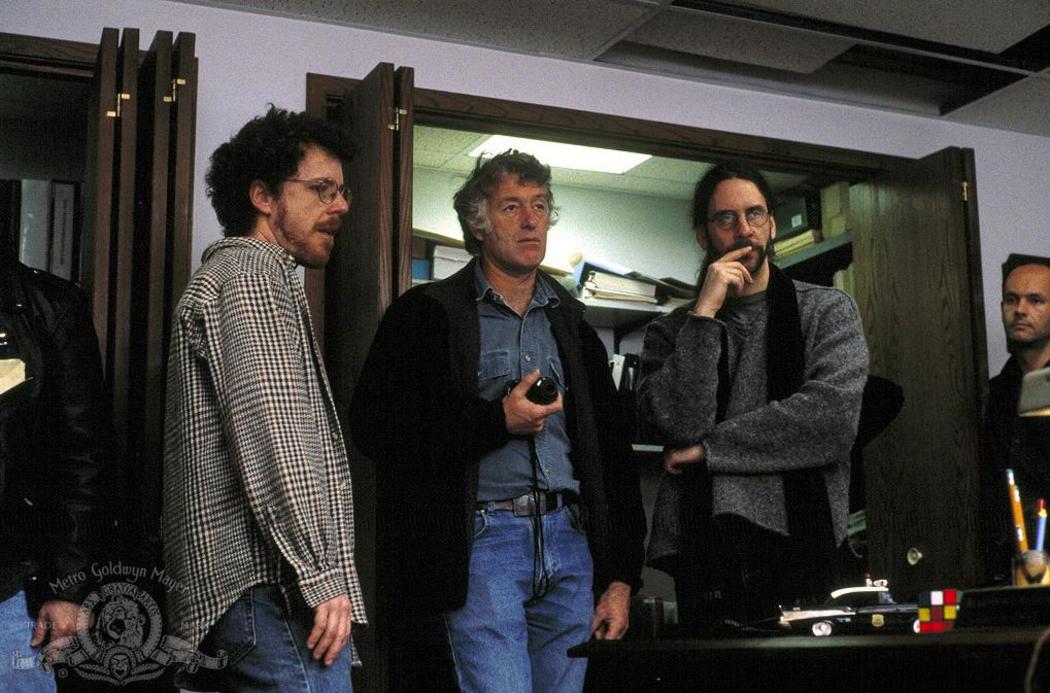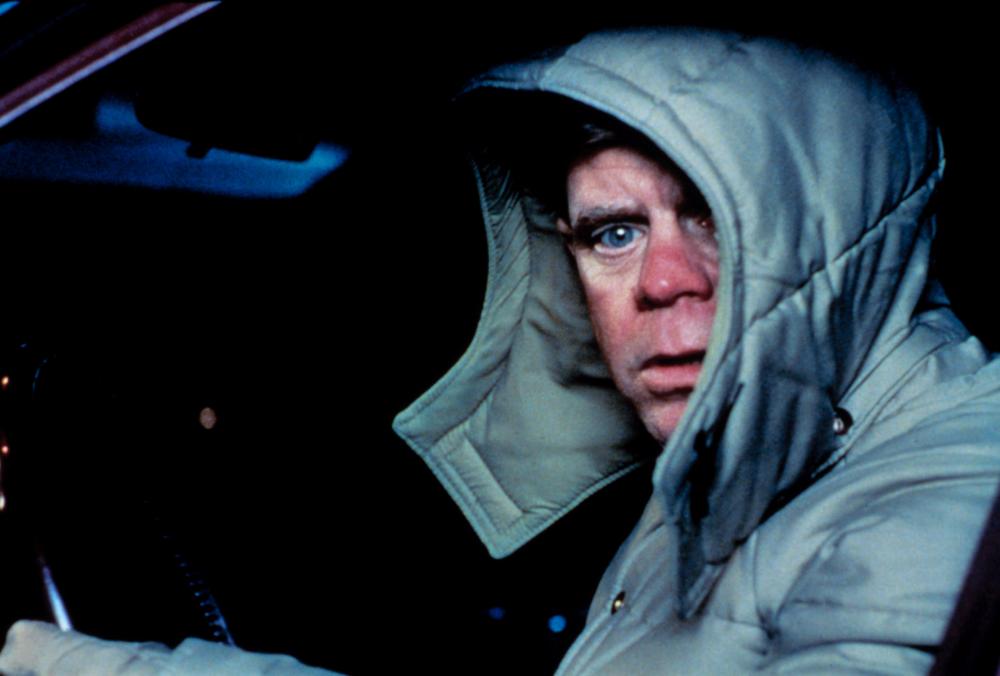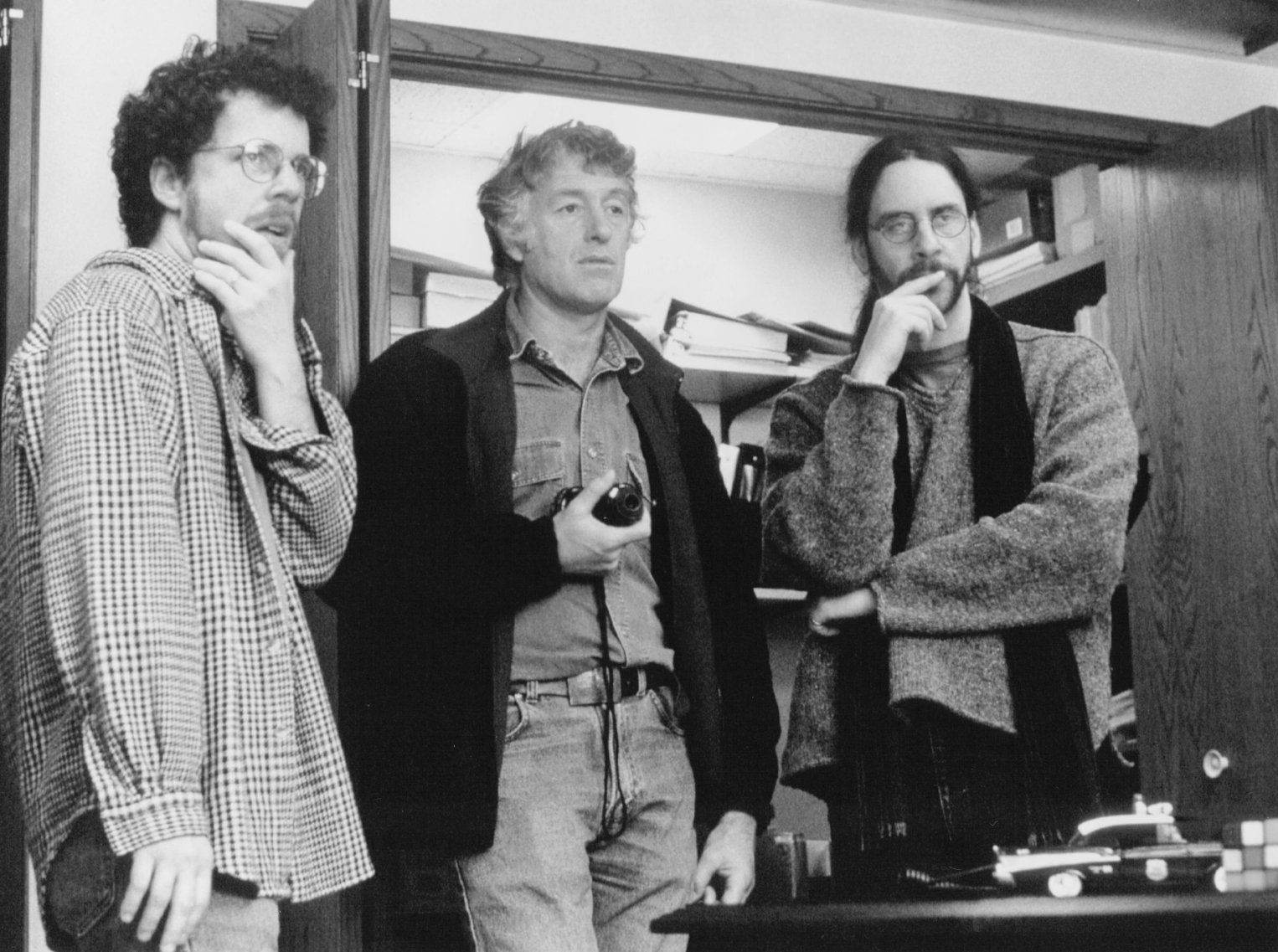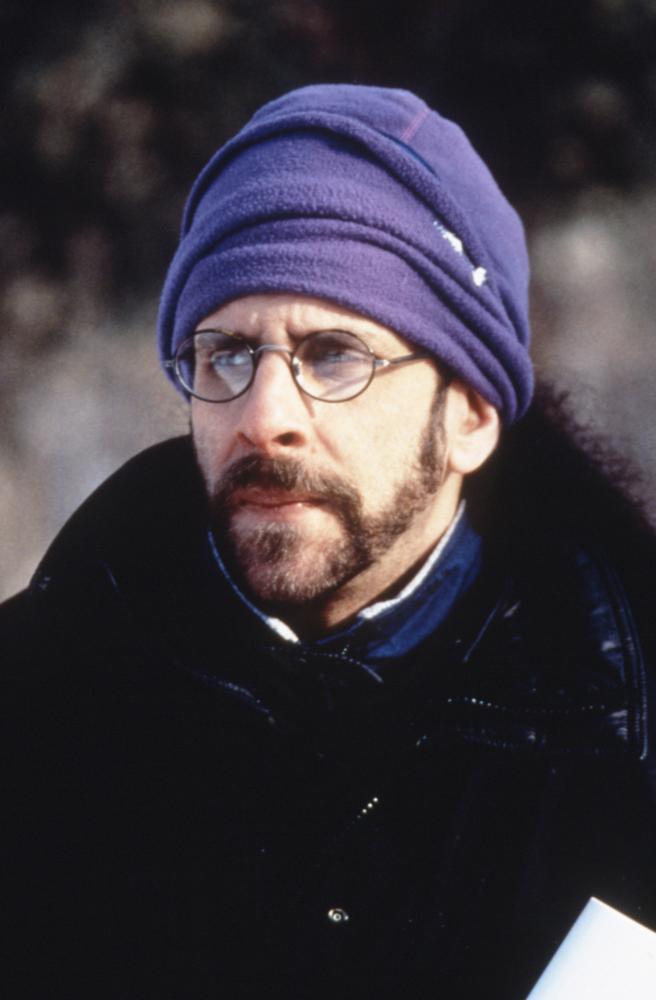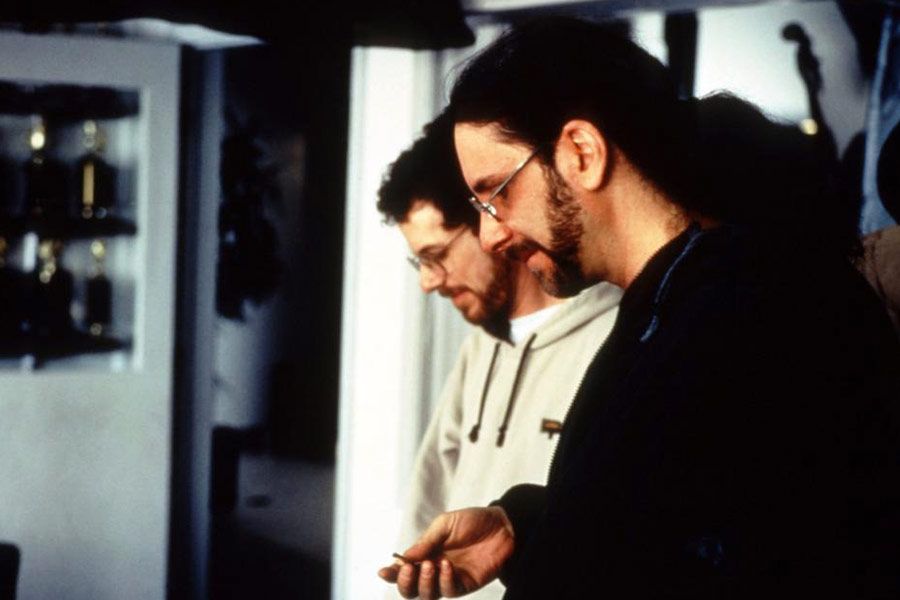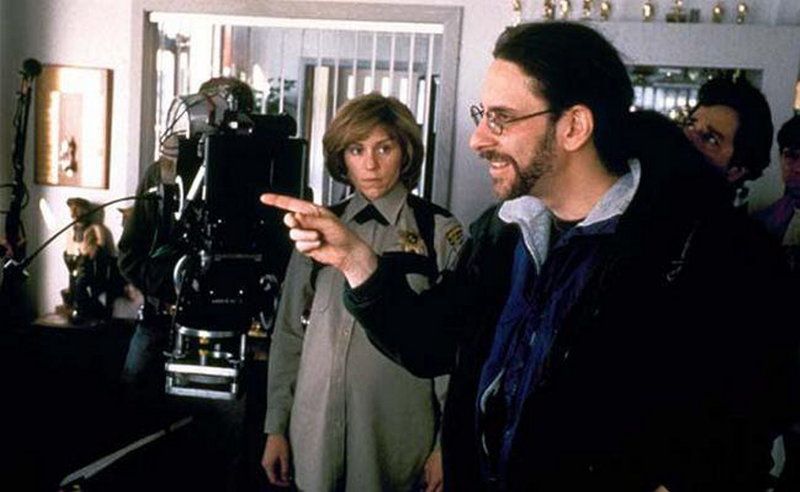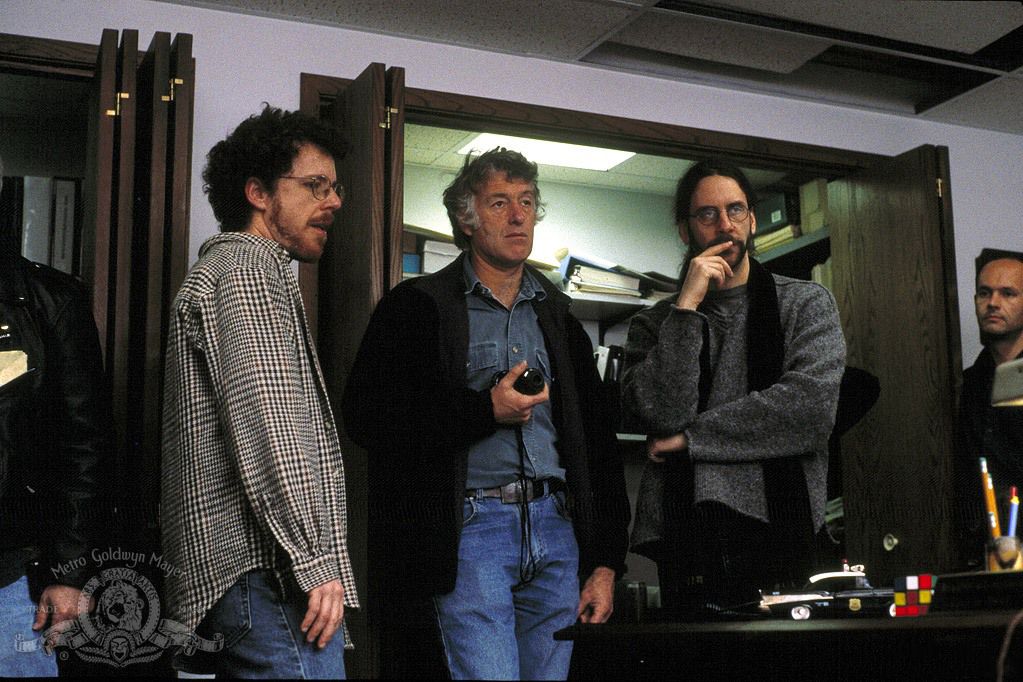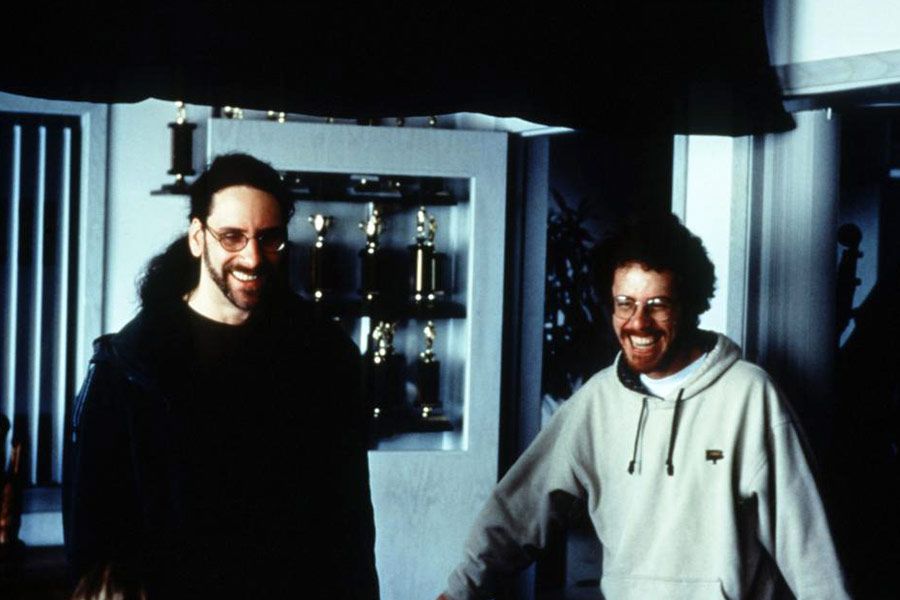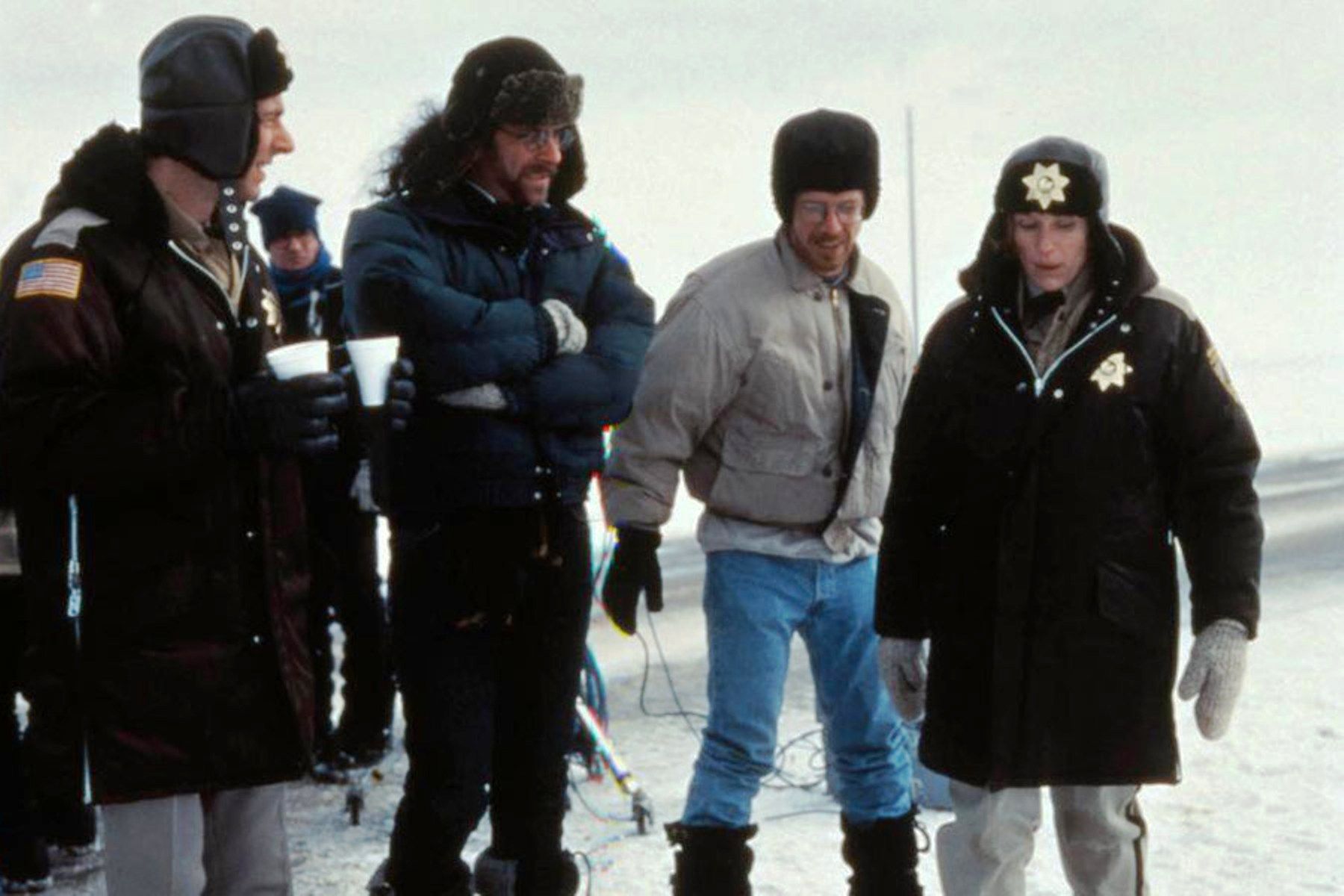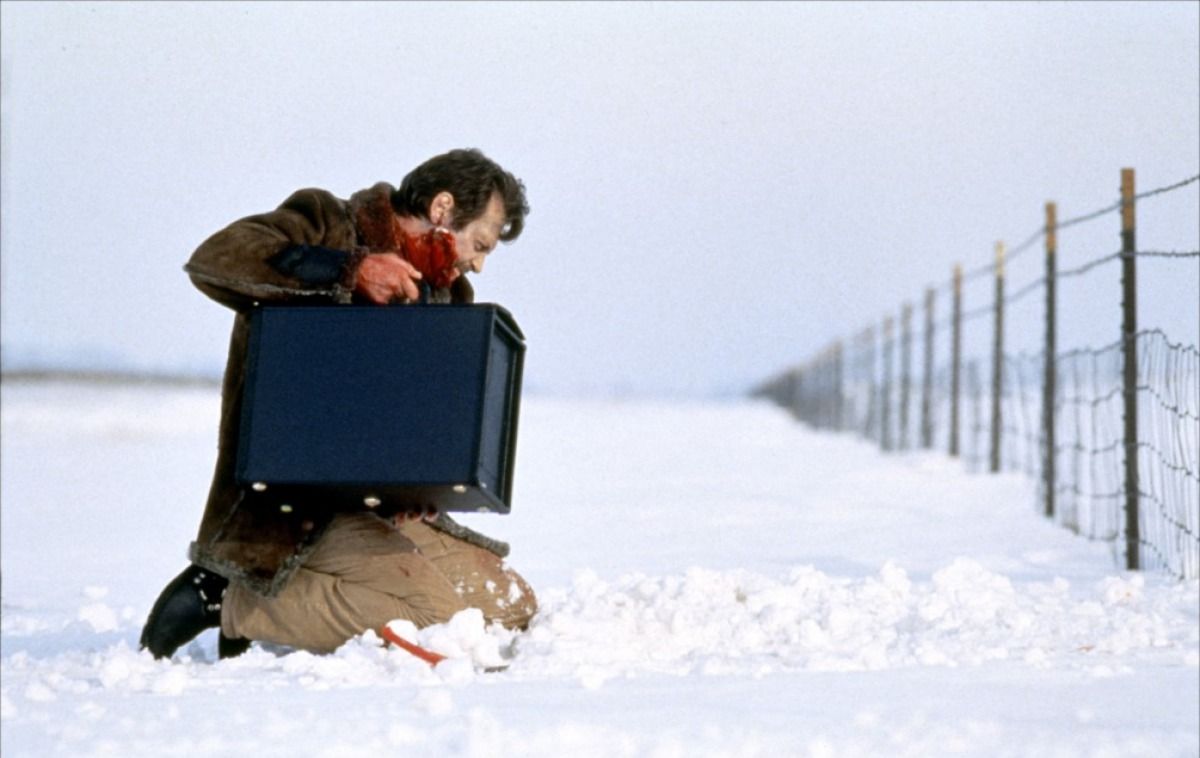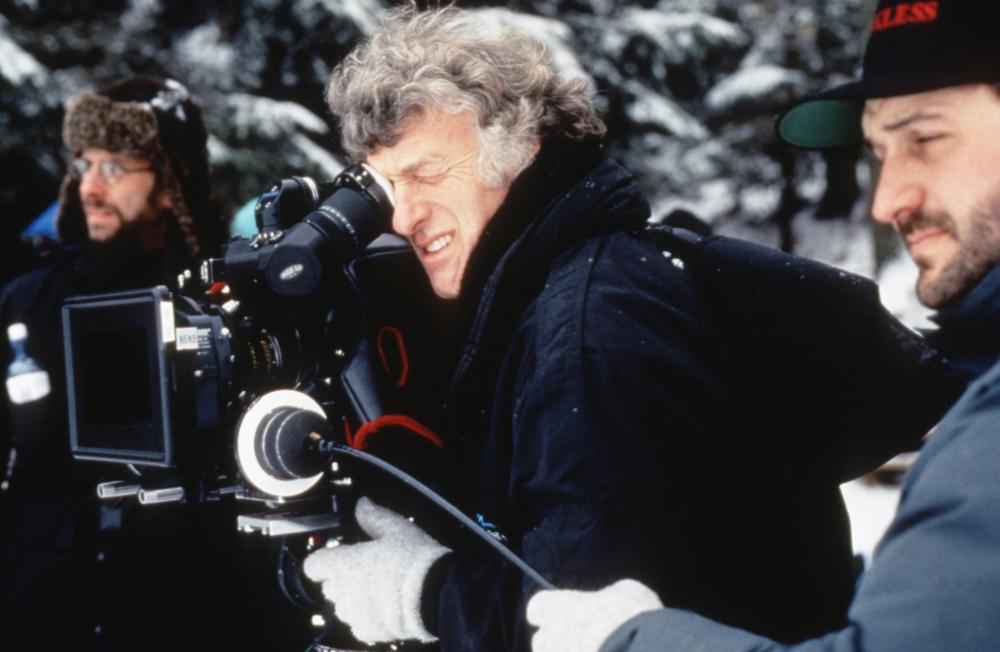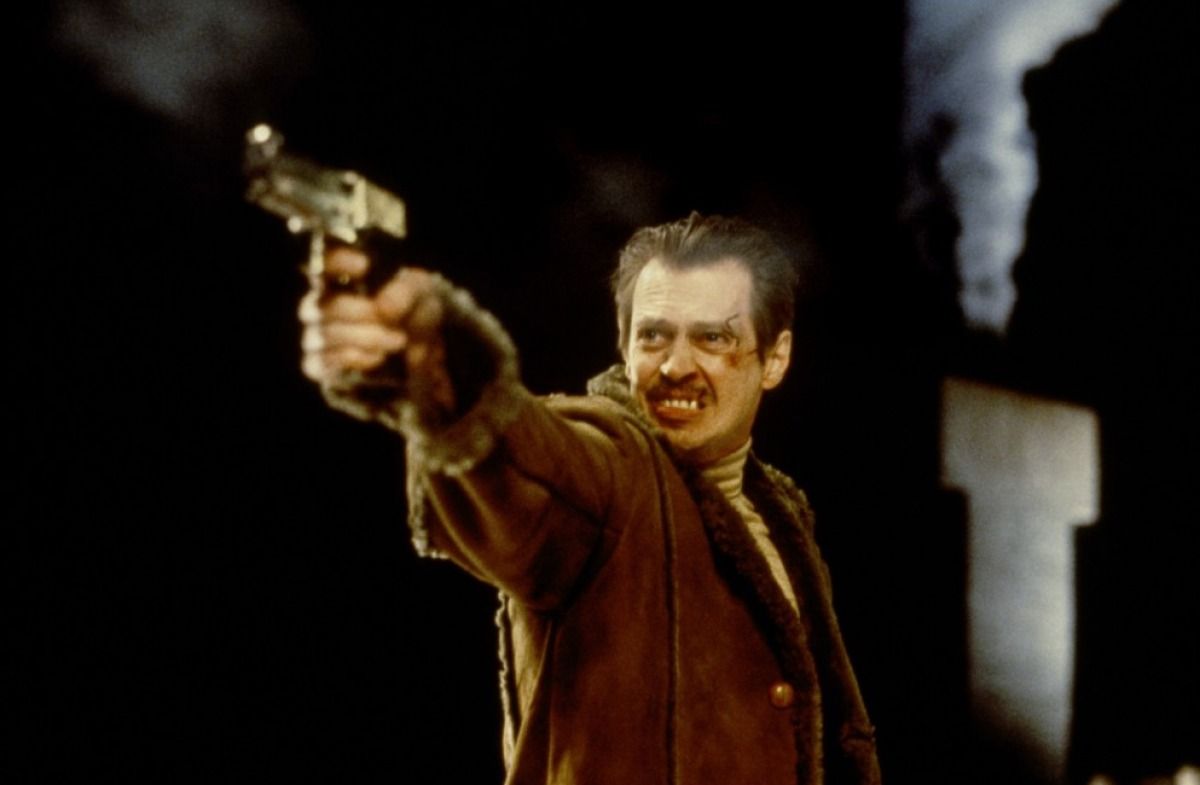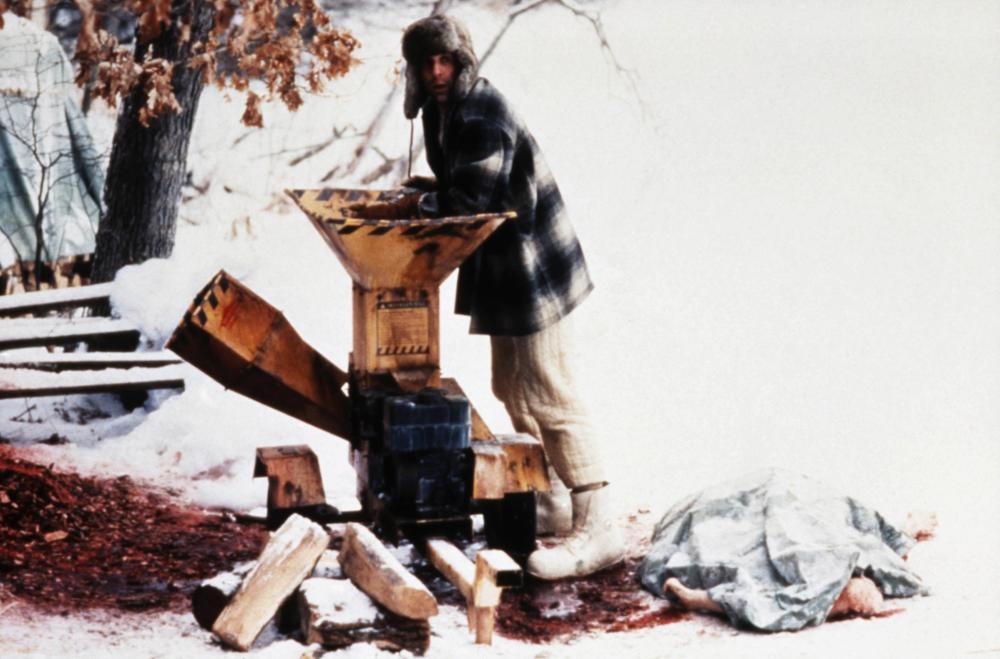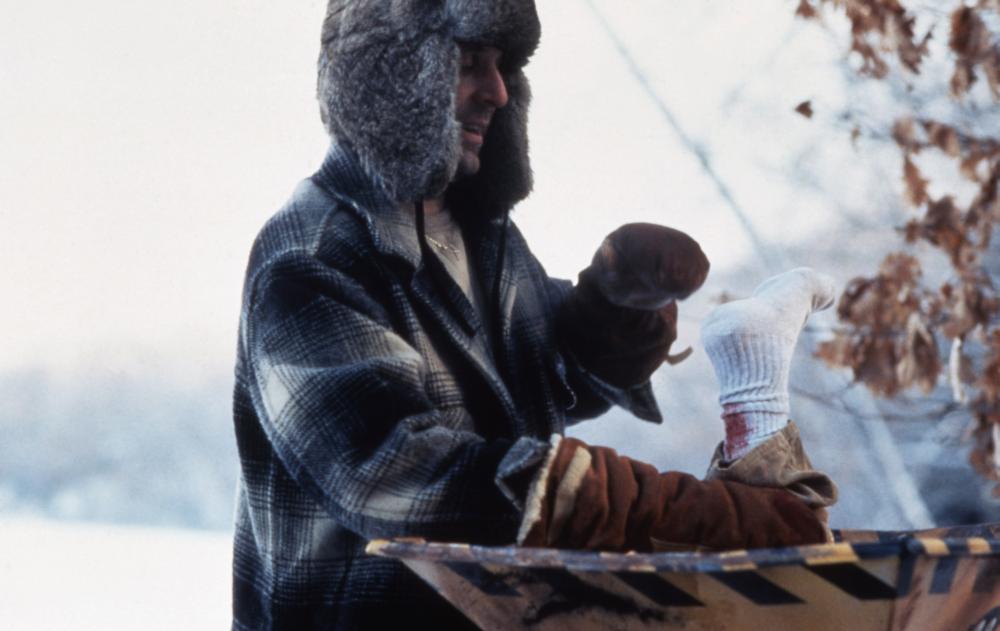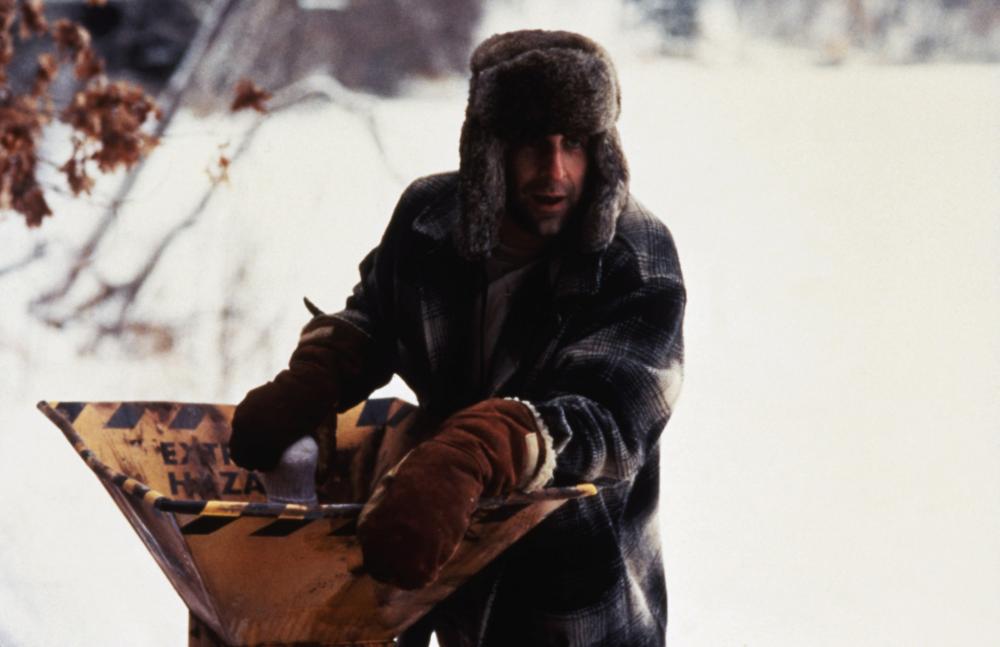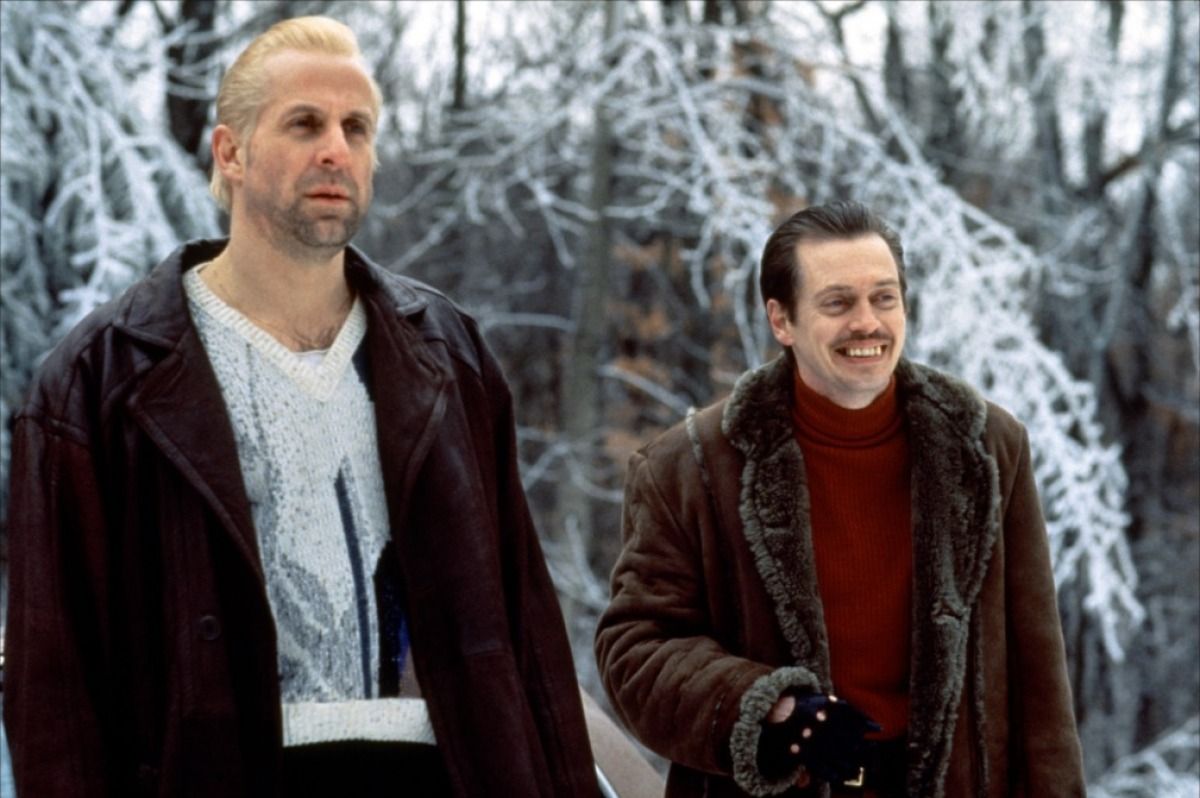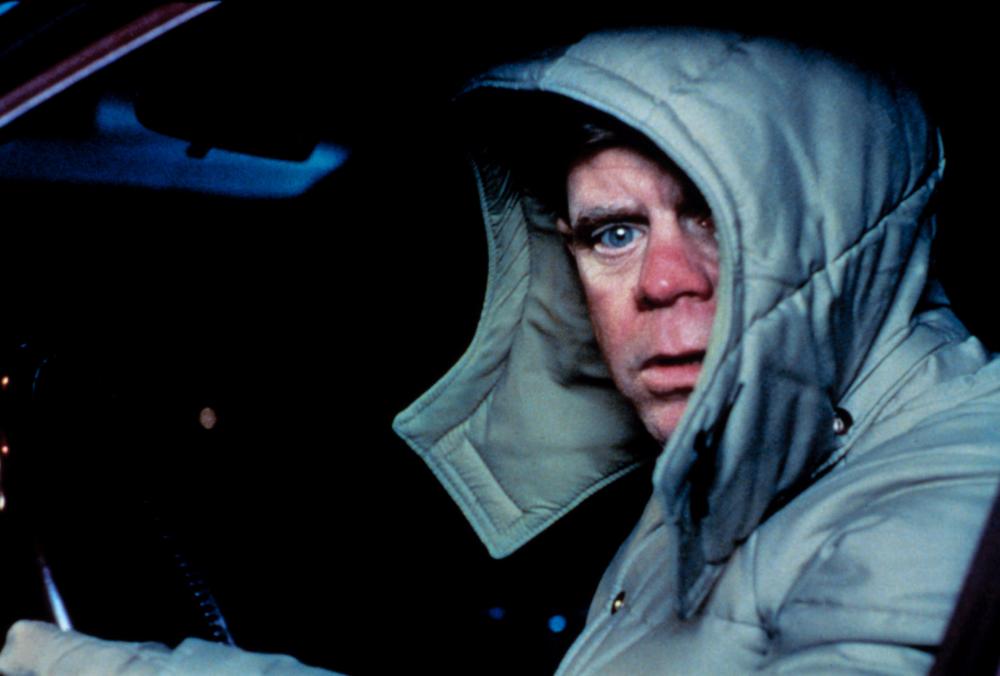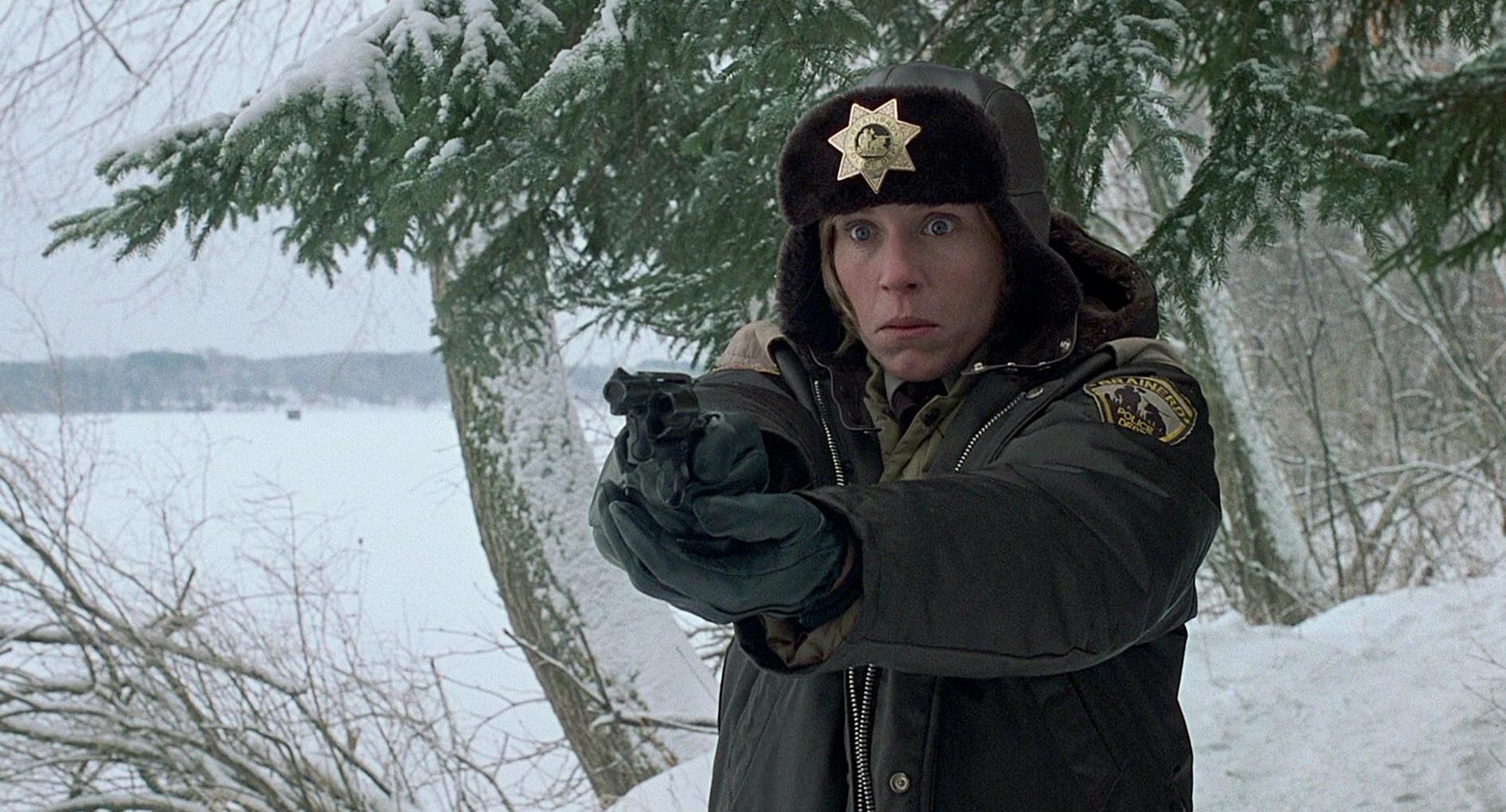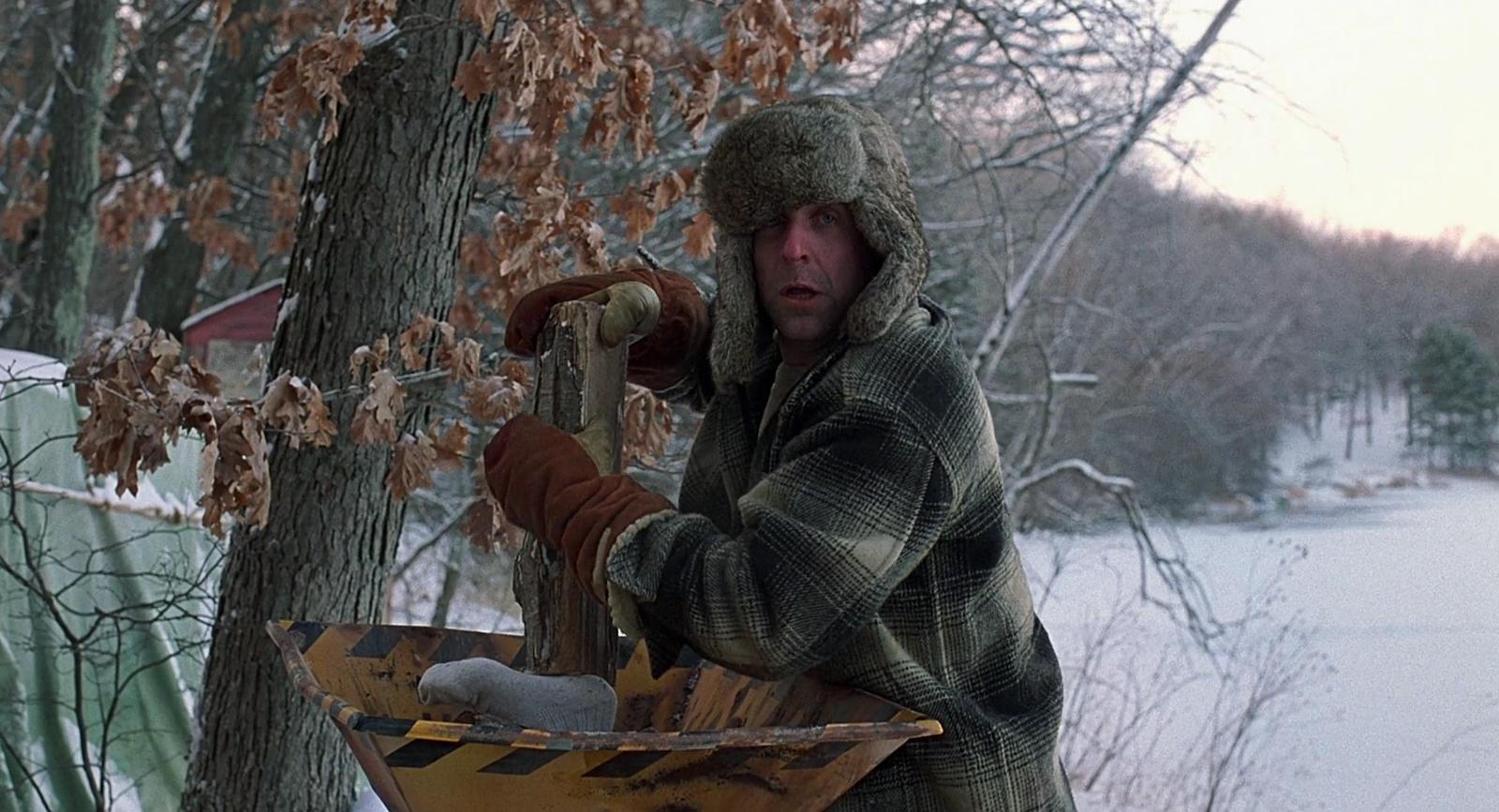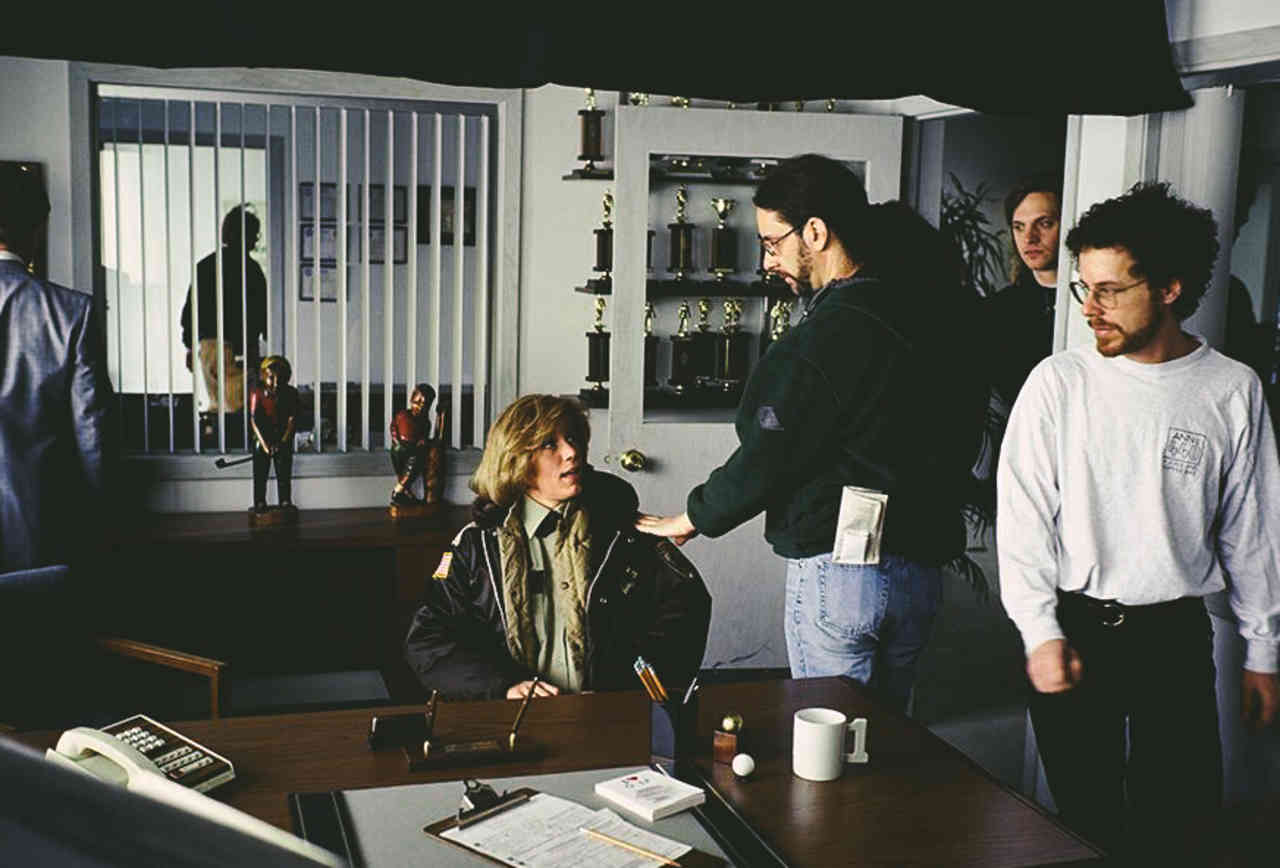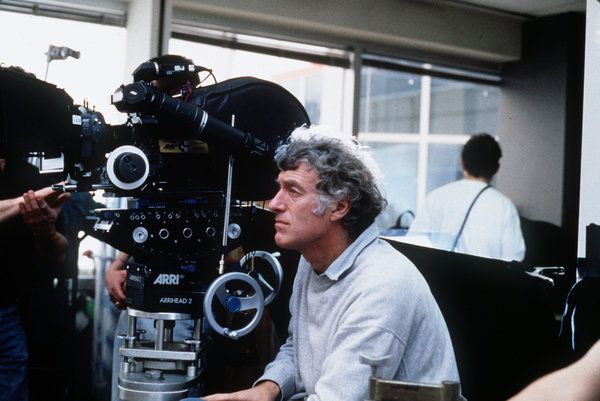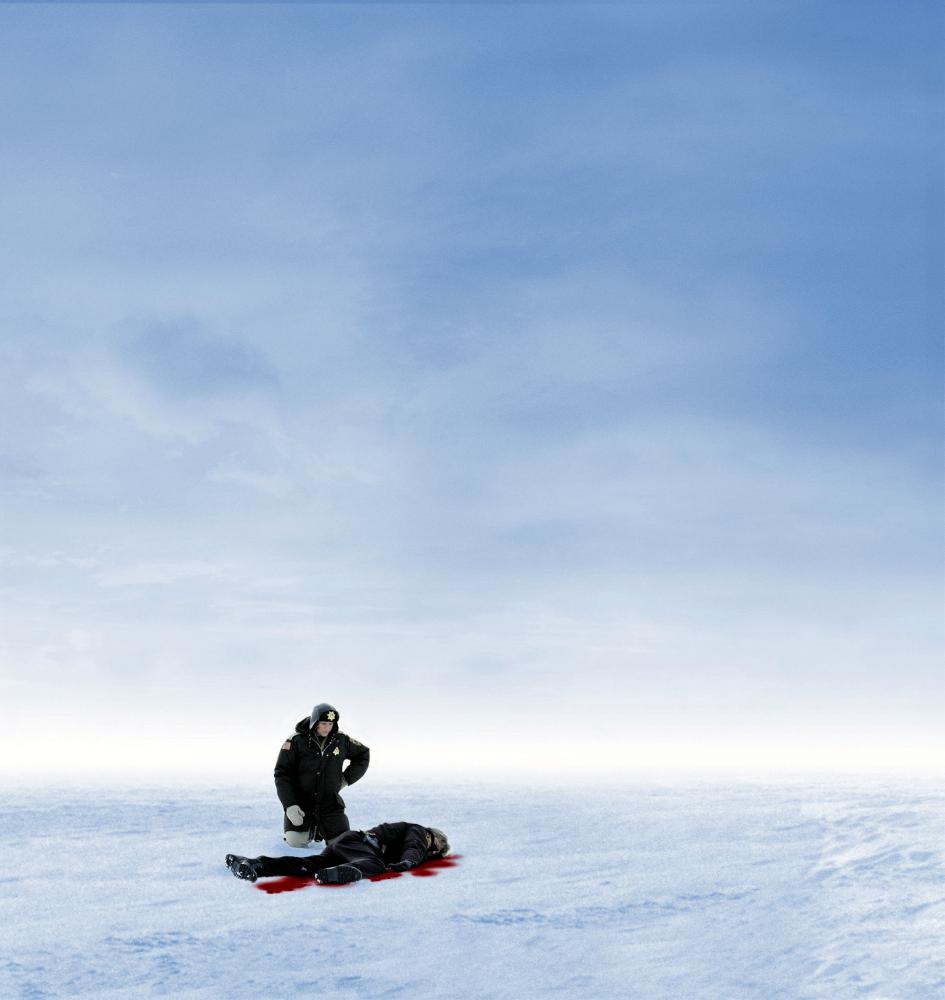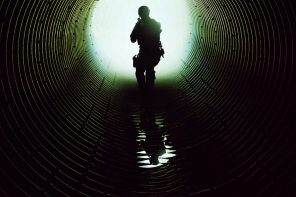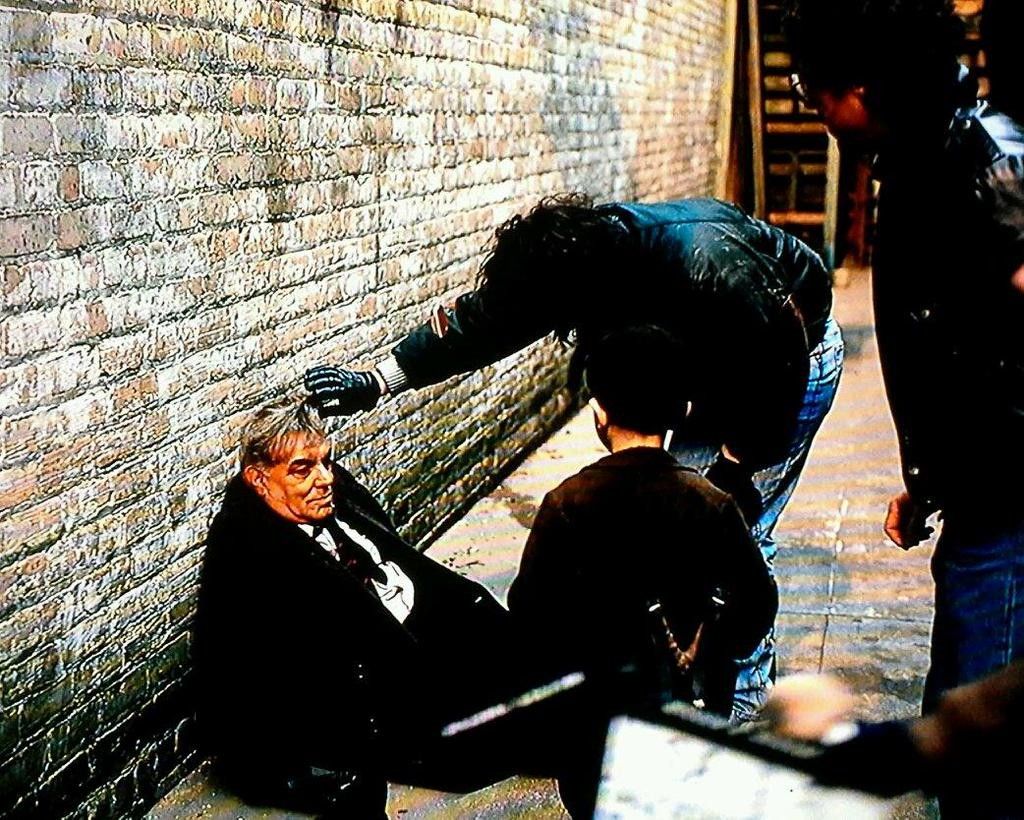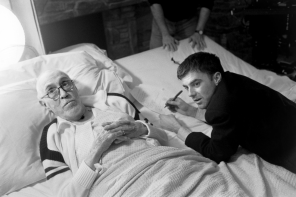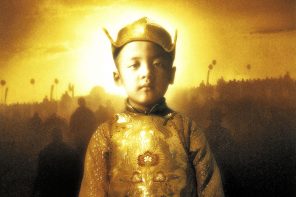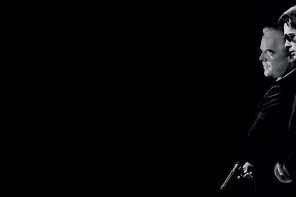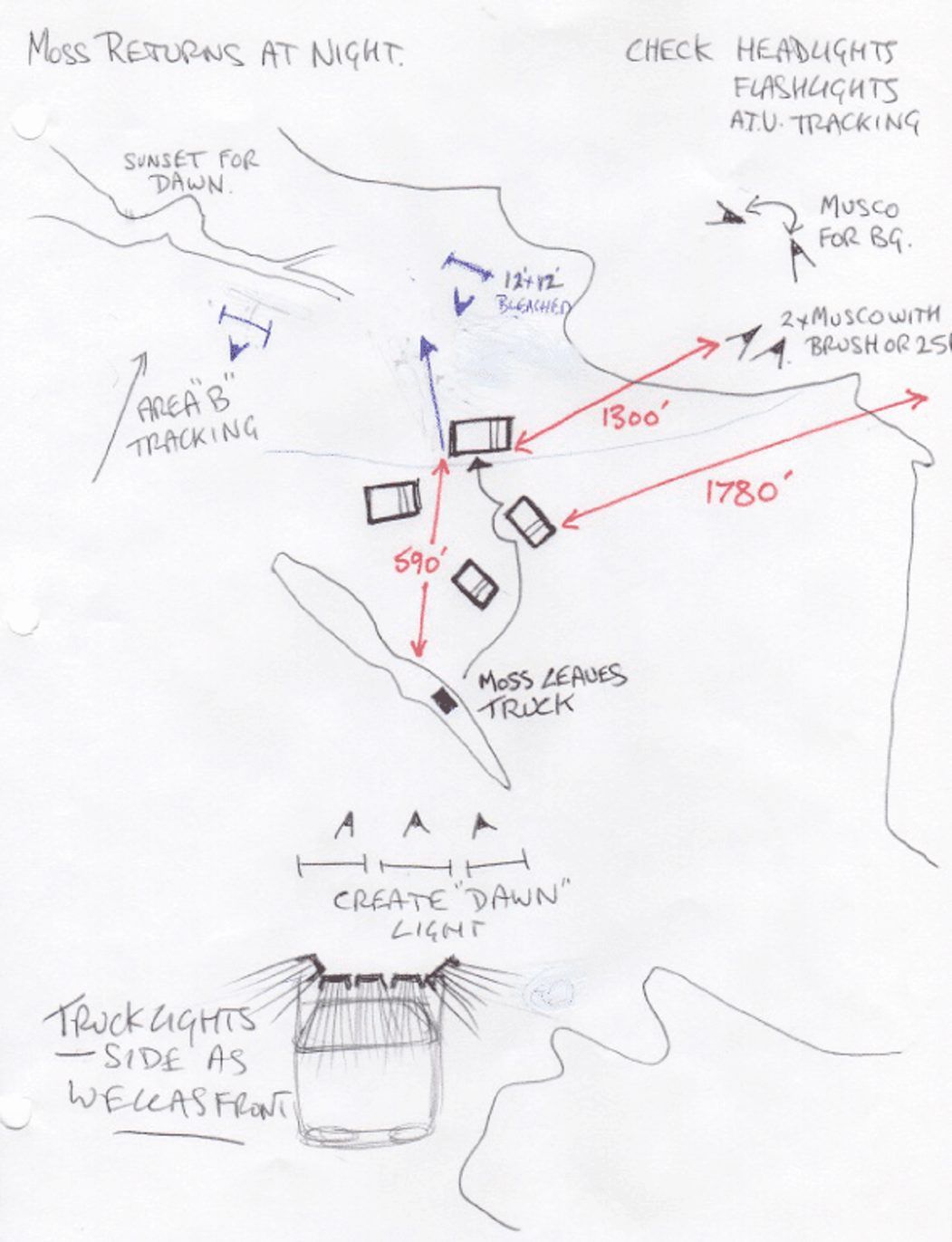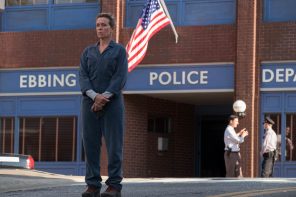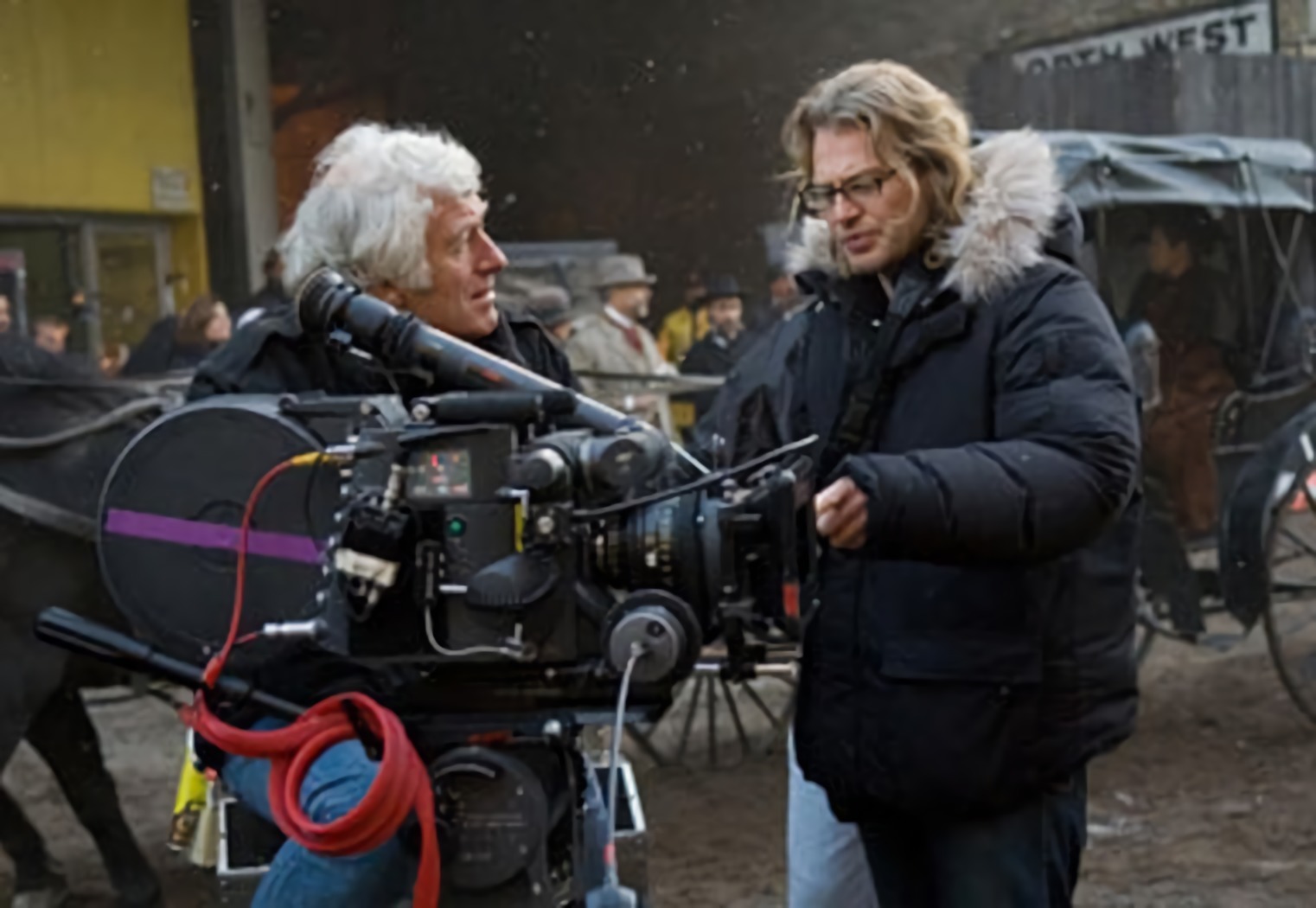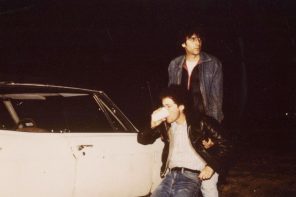Even though the Coen brothers made a name out of themselves in the indie circles with a series of praised movies such as Blood Simple, Raising Arizona, Miller’s Crossing and Barton Fink, their fifth film was a major financial flop. Ethan and Joel Coen made The Hudsucker Proxy, a smart and typically strange comedy with Tim Robbins, Jennifer Jason Leigh and Paul Newman. With a budget of 25 million dollars, it was a serious blow when the box office outcome gave them back only a tenth of the invested funds. This was a delicate time for the filmmaking brothers, as they had reached a specific point in their career where the next project would most likely be the deciding one. It’s no surprise that their associate William Preston Robertson, as he acknowledged in his book ‘The Big Lebowski: The Making of a Coen Brothers Film,’ panicked when he read the screenplay for Fargo, the film Joel and Ethan wanted to do next. “It’s the weirdest, most bizarre, most inaccessible of all of the things you’ve written,” he commented, advising strongly against what he saw as the definite career suicide. But Fargo, the humorous dark comedy we have all gotten to love in the years since, turned out to be a huge commercial and critical success, opening the doors of mainstream America for the two brothers whose unique authorial voice had been perceived too unapproachable for the average film lover. It’s easy to see what made the audience fall in love with this movie: Fargo features a very, very dark story set in the cold and dark Minnesota, the authors’ homeland. It’s a story of murder, blackmail, kidnapping; a bloody account of deceit, lying, cheating and amorality. But it’s also a narrative filled with humor and warmth, channeled for the most part through the unforgettable character of Marge Gunderson and, to a lesser degree, her benign husband Norm. Ms. Gunderson, the police officer who tries to decipher the monstrous events unfolding around her, is the emotional and moral center of the story, the anchor in the overwhelming storm of wrongdoings that engulfs the small town unused to big-city-corruption and abomination. Played by the marvelous Frances McDormand, Marge rightfully entered the pantheon of the most distinguished film characters of all time, but Fargo doesn’t stand on her shoulders alone. Written by Ethan and Joel, this is a very entertaining, funny, stylish movie further enhanced by the great Roger Deakins’ cinematography, where the general bleakness of landscape and morality are effectively penetrated by lively splashes of ominous red, and Carter Burwell’s beautiful score. What should also be noted is that Fargo is a typical Coen film in both the thematical and stylistic aspects, and as such served as the stepping stone of the general audience in their entry into the world of one of the most distinguishable filmmaking forces of contemporary cinema.
Besides McDormand, Fargo showcased serious acting talents in several career-defining roles, such as Steve Buscemi, William H. Macy, Peter Stormare and Harve Presnell. A big commercial hit in the United States, Fargo experienced almost uniformly enthusiastic response from the critics when it came out in March 1996. It was nominated for no less than seven Academy Awards, winning in the Best Actress and Best Original Screenplay categories, while Joel Coen received the BAFTA David Lean Award and the Cannes Film Festival Award for directing. How much it resonated within the film-appreciating community can be also seen in the fact it was selected for preservation in the US National Film Registry by the Library of Congress as early as in 2006. The influence of Fargo, further empowered by the popular FX’s, Coens-produced TV show of the same name, easily spills over the limits of the world of cinema, as the film’s distinctive dialect and mild-mannered behavior called “Minnesota nice,” as well as its memorable quotes, entered the everyday language. With regard to the film’s influence on their authors’ career, it proved to be instrumental, as its success set the brothers up as a powerful and effortlessly recognizable cinematic voice.
Characteristically playing with the boundaries of the chosen genre and toying with the audience’s expectations, the Coen brothers created a refreshing and highly enjoyable hybrid of dark comedy and thriller, a neo-noir 98-minute roller-coaster ride through the desolate, snow-covered landscapes of Minnesota and the peculiar people that inhabit them, exploring and illuminating the dark corners of the human psyche and juxtaposing them against the humanity, humor and kindness stumbled upon in the mundane and ordinary. Brutally violent but charmingly idiosyncratic, dominantly murky but simultaneously hopeful and upbeat, Fargo is one of those special films that deserve to be revisited every once in a while, and as one of the best works of the Coen brothers, it’s at the same time among the best films America has presented to the world in the past couple of decades.
A monumentally important screenplay. Dear every screenwriter/filmmaker, read Ethan Coen & Joel Coen’s screenplay for Fargo [PDF]. (NOTE: For educational and research purposes only). The DVD/Blu-ray of the film is available at Amazon and other online retailers. Absolutely our highest recommendation.
 Loading...
Loading...
In the interview which follows, initially published in 1996, Joel and Ethan Coen discuss the writing and filming of Fargo, its precise characterizations, acting performances and the visual style that emphasizes the spiritual landscape of the bleak Midwestern setting. From ‘Closer to Life Than the Conventions of Cinema’ by Michel Ciment and Hubert Niogret (Positif, 1996). Revised version in ‘The Coen Brothers: Interviews’ (Conversations with Filmmakers) Ed. William Rodney Allen. (University Press of Mississippi, 2006).
Did some news item inspire Fargo, as the press kit suggests, or is that another false trail that you two have laid?
JOEL COEN: In its general structure, the film is based on a real event, but the details of the story and the characters are fictional. We were not interested in making a documentary film, and we did no research about the nature of the murders or the events connected to them. But in warning viewers that we had found our inspiration from a real story, we were preparing them to not view the film like an ordinary thriller.Did this kidnapping of a wife organized by her husband create a good deal of sensation in 1987?
ETHAN COEN: It didn’t. In fact, its surprising how many things of this land get very little publicity. We heard about it from a friend who lived very close to where the story unfolded in Minnesota, which also happens to be where we are from.Why did you call the film Fargo when the important action of the film is set in Brainerd, which is in Minnesota, and not Fargo?
JC: Fargo seemed a more evocative title than ‘Brainerd’—that’s the only reason.
EC: It was just that we liked the sound of the word—there’s no hidden meaning.
JC: There was, to be sure, a kind of western connection with Wells Fargo, but that was not part of our intention, and it’s too bad that some people should have thought so.Here you returned somewhat to the territory of your first films, Blood Simple and Raising Arizona.
JC: There are some similarities, but also some important differences. These three films are all small-scale productions, their main themes relate to criminality, to kidnapping, and they are also very specific in their reference to geographical locale. Furthermore, Frances McDormand plays a role in Fargo and Blood Simple. But we have always thought that Blood Simple belongs to the tradition of flamboyant melodrama, as given expression in the novels of James M. Cain, along with some influence from the horror film. In Fargo, we tried out a very different stylistic approach, introducing the subject in a quite dry fashion. Our intention was also that the camera should tell the story like an observer. The structure of the film also follows from the origin of the story in an actual event: we allowed ourselves more digressions and detours. Each incident did not necessarily have to be connected to the plot. We also allowed ourselves to withhold the appearance of the heroine, Marge Gunderson, until the middle of the film.
EC: This is also a way of signifying to the viewer that he was not watching a genre film, that we were not going to satisfy expectations of this kind. In this way too, the film differs from Blood Simple.What is it that drew you to the subject?
JC: There were two or three things about the actual events that interested us. In the first place, the story takes place in a time and place with which we were familiar and could explore. And then again it features a kidnapping, a subject that has always fascinated us. In fact, we had a screenplay that was quite different from Fargo that we would have been very happy to shoot. Finally, this subject offered us the chance to shoot a crime film with characters quite different from genre stereotypes.
EC: It’s probably not a subject we would have worked with had it not been connected to this particular context. When we begin writing, we need to imagine in a quite specific way the world where the story unfolds. The difference is that until this point these universes were purely fictional, while in the case of Fargo there was an air of authenticity we had to communicate. Since we come from the area, that helped us take into account the particular character of the place.A ‘dialogue coach’ is listed in the credits. Is that a gag?
EC: No, not at all. Most of the actors come from this part of the country, and they did not need coaching, but Frances McDormand, Bill Macy, and Harve Presnell had to have some training so their accents would blend with the others. This was partly how the characters were developed, and it also contributed to the air of authenticity.
JC: The people there speak is a very economical fashion, which is almost monosyllabic. This seems as exotic to other Americans as it does to you Europeans! In fact, the Scandinavian influence on the culture of that area, the rhythm of the sentences, the accent, all of this is not familiar at all to the rest of America. The story could have just as well taken place on the moon! New Yorkers have a general conception of Midwesterners, but they know nothing about these cultural ‘pockets,’ these microsocieties with their idiosyncrasies and peculiarities.
EC: When we were small, we were not really conscious of this Scandinavian heritage that so strongly affects this part of the country simply because we had no points for comparison. When we got to New York City, we were astonished not to find any Gustafsons or Sondergaards. Certainly, all the exoticism comes from this Nordic character, with its polite and reserved manner. There’s something almost Japanese in this refusal to register even the least emotion, in this resistance to saying no. One of the sources of comedy in the story comes from the opposition between this constant avoidance of all confrontation and the murders gradually piling up.
JC: We didn’t need to do any research since this manner of speech, these expressions, these sentence cadences were familiar to us. Our parents had always lived in this part of the country, and that means we returned there regularly and were familiar with the culture. After all, it’s this culture that shaped us. Because we had not lived there for some time, we had the feeling of being separated in part from the environment where we had grown up.
The episode between Marge and her old high-school friend is a digression from the central narrative, which is fairly compressed.
EC: Someone mentioned to us that in this scene, Frances acts in the very restrained manner of an Oriental, while her Japanese friend is talkative and irrational in the American style. It was certainly our intention while writing this sequence that it should be a digression.
JC: We wanted to provide another point of view on Frances’s character, one that had nothing to do with the police investigation. This is also what happens in the scenes with her husband.
EC: Our intention was to demonstrate that this story is more closely connected to real life than to fiction, and we felt free to create a scene that had no links to the plot.The Hudsucker Proxy is no doubt your most stylized film. This one, in contrast, is probably your least.
JC: We wanted to take a new approach to style in this film, to make something radically different from our previous films. And it is true that we were pressured in this direction because the preceding film was the most ‘theatrical’ of them all. But curiously, working from actual events, we came to yet another form of stylization, in the largest sense of that term. The end result was then not as different as we imagined it would be!A little like Kubrick did with Dr. Strangelove, you begin with a somewhat documentary presentation, then little by little, with icy humor, everything comes unglued and turns in the direction of the absurd.
EC: That resulted in part from the nature of the story. There is a plan that is established at the beginning and which in the end changes as the characters lose control of it.
JC: That’s an effect implicit in the form of the story. When a character, in the first scene, tells you how things are going to go, we know very well that the unfolding of the story will go in a quite different direction. Others have also made reference to Kubrick, and I see the connection. His approach to the material is very formal, but then progresses regularly from the prosaic to the baroque.How did you succeed in never falling into caricature, a danger because of the kind of story you work with?
JC: I suppose intuition plays some role with regard to our choice of style, and, even more, it depends a great deal on the actors and their ability to know when they might be going too far. For example, Frances’s way of presenting her character is very sincere, very direct. That prevents Marge from becoming a parody of herself. Frances was very conscious of the dangers posed by excessiveness because of the quirk she used of dragging out the end of every sentence.
EC: We worked constantly on the set making adjustments with the actors. They’d give us a fairly wide range of behaviors for their characters, and we never stopped discussing that while shooting proceeded.
JC: We worked a good deal on ‘feeling.’ It’s hard to say in words why Marge, in the film, is not a caricature, but a real person with three dimensions.
EC: What’s certain about this is that when we were writing the screenplay and the actors were interpreting their roles, none of us thought of the story as a comedy.
JC: And that certainly helped, at the same time, to create comic effects and make the characters plausible. The comedy would not have worked if the film had been shot as a comedy, instead of sincerely and directly.The relationship between Marge and her husband is also quite strange.
JC: We were intrigued from the moment we started casting by the notion of very simple interplay between them and by the impassive expression of John Caroll Lynch, which seemed to suit the tone of the film perfectly.
EC: He is the perfect incarnation of the undemonstrative personality of people from that region. The relations between husband and wife are based on what is not said, and yet they succeed nevertheless in communicating in some sense.The end seems to be a parody of the classic Hollywood happy ending with the husband and wife on their bed symbolizing the return to order and to the natural.
JC: It is true that this is a return to order, but we did not have the intention of finishing up with a scene that’s a parody. There was an article in the New York Times in which the writer asked why the people in Minnesota did not like the film’s end, even though everything turned out for the best, as they are fond of believing there!The only point at issue in the ending has to do with money. But isn’t money the film’s principal subject?
JC: All the characters in the film are obsessed with money.
EC: At the same time, we did not want to be too specific, for example, concerning the debt Jerry owes. It was enough to understand that this character had trapped himself by getting involved in some deal that had turned out badly. Moreover, during the entire film, Jerry is a pathetic loser who never stops improvising solutions in order to escape from the impasses he finds himself blocked by. He never stops trying everything, never stops bursting with activity. That almost makes him admirable!
JC: What we found interesting from the beginning in the character played by William Macy is his absolute incapacity, for even one minute, to project himself into the future so that he might evaluate the consequences of the decisions he has made. There is something fascinating about his total inability to gain any perspective. He’s one of those people who build a pyramid but never think for a minute about it crumbling.
Did writing the screenplay take a lot of time?
EC: We had begun it before shooting The Hudsucker Proxy; afterward we went back to it, so it is pretty hard for us to estimate the time it all took. But two years had passed. What is certain is that the writing was easy and relatively quick, especially in comparison with our other screenplays, such as the one for Miller’s Crossing.Was it determined from the beginning that the wife, once kidnapped, would no longer be a physical presence?
JC: Yes, absolutely. And at a certain point in the story, it was also evident to us that she would cease to be a person for those who had kidnapped her. Moreover, it was no longer the actress Kristin Rudrud who played her, but a double with a hood over her head. In this case, we had no interest in the victim. It did not seem that at any point the husband himself was worried about what might happen to her. And Carl, one of the kidnappers, didn’t even know her name.Did you pick Steve Buscemi for this part before you had settled on Peter Stormare to play the other bad guy?
EC: In fact, we wrote the parts for these two comedians. And it was the same for Marge, played by Frances McDormand. Peter is an old friend, and he seemed an interesting choice for the role. Of course, his character is an outsider in the milieu where he finds himself, but at the same time he has an ethnic connection to it.How do you work with your music director Carter Burwell?
JC: He has worked with us since our first project. Usually, he screens the film all the way through, then he plays a little bit of what he has in mind for us on the synthesizer so that he can give us some idea of what direction he’d like to go in. Before planning the orchestration, he plays parts of it for us on the piano, and we think about the connections these might have with certain sequences of the film. Then he goes on to the next step.
EC: In the case of this film, the main theme is based on a popular Scandinavian melody that Carter found for us.
JC: This is often how we work with him. For Miller’s Crossing, the music came from an Irish folk tune that he used as the basis for his orchestration, adding bits he wrote himself. For Raising Arizona, he used a popular American tune that Holly Hunter sings part of. On the other hand, for Blood Simple and Barton Fink, the music is all his own composition; it wasn’t inspired by anything else. For The Hudsucker Proxy, it was different yet again, a mix of an original composition by Carter and bits and pieces of Khachaturian.
EC: After he completes the orchestration, we go along with him to the sound recording studio. For our last two productions, he directed the orchestra himself. While the film is projected, we are still able to make last-minute changes. All told, the collaboration with him does not last more than two or three months.How long did the editing take?
JC: About twelve weeks. That was a pretty short time for us because usually we take more, depending on whether we start editing while we’re still shooting.Did the principal photography pose any problems for you?
JC: It was easier for us in this case than with our other films. We talked it over a great deal with Roger Deakins because we wanted to shoot a good many exterior long shots. From the very beginning, we determined to use nothing but shots where the camera does not move.
EC: Afterward we decided that this purist attitude was pretty stupid.
JC: And so we decided then to move the camera sometimes, but in such a way that the viewer would not notice it. We didn’t want to make the camera movement dramatic like we’d done in the past because we did not want to emphasize the action, make it seem either too dramatic or irrational.
EC: Roger Deakins worked on this production with a camera operator although, in the past, he was most often his own camera operator, including the two films he had made for us. This time he did not take charge of everything because he was often busy with the camera. On Fargo, we had problems with the weather because we needed snow, but the winter when we shot the film was particularly mild and dry. We had to work in Minneapolis with artificial snow. Then, because the snow didn’t always work out, we had to travel in the end to North Dakota to shoot the large-scale exteriors. There we found exactly what we were looking for: a sky with a very low ceiling, no direct sunlight, no line marking the horizon, only a neutral and diffuse light.
JC: The landscapes we used were really dramatic and oppressive. There were no mountains or trees, only desolate flatlands extending into the distance. That’s what we wanted to put on the screen.
Do you spend a lot of time looking through the camera?
JC: For the first film we made with Roger Deakins, Barton Fink, we were constantly looking through the viewfinder. For Hudsucker Proxy, less. And even less in the case of Fargo. This was no doubt a reflection of the material in each case and of the visual effects we were looking for, but it also resulted from our developing collaboration with the director of photography. When we work regularly with someone, we rather quickly develop a sort of telepathic language. I also think that Roger likes to work with people like us who take an active interest in problems of lighting, rather than with directors who depend entirely on him.There’s a contradiction between what it says in the press kit, which credits you with the editing, and the film credits that name a certain Roderick Jaynes.
JC: Whenever we edit the film ourselves, we use the pseudonym Roderick Jaynes. We prefer a hands-on approach rather than sitting next to someone and telling them when to cut. We think that’s easier. In any case, there are two of us in the editing room. As for everything else, we work together, and we never have the feeling of isolation that other people sometimes have. On Barton Fink and Blood Simple, we were also our own editor. On the other projects, we have used an editor, but we were always there, of course, whenever we could be. But if we called upon Tom Noble or Michael Miller in these other cases, it was because the editing, for reasons of scheduling, had to start while we were shooting.Your films are set in New Orleans [sic], in New York, in Hollywood, in the West, or the Midwest. It seems you are interested in exploring American geography.
JC: We would like to shoot somewhere else, but, bizarrely, the subjects we come up with are always set in America. That’s what seems to attract us.
EC: It’s always necessary, or so it seems, that the universe in which our stories take place has some kind of connection, however distant, with us. In the case of Fargo, the connection was obviously even closer.
JC: We have a need to know a subject intimately or, at least, feel some emotional connection to it. At the same time, we are not interested unless there is something exotic about it. For example, we know Minnesota very well, but not the people who inhabit Fargo or their way of life. On the other hand, in the case of Barton Fink and Miller’s Crossing, the exoticism came from the story’s being set in a distant time.What are your connections with the characters in Fargo, who for the most part seem somewhat retarded?
JC: We have affection for them all and perhaps particularly for those who are plain and simple.
EC: One of the reasons for making them simple-minded was our desire to go against the Hollywood cliché of the bad guy as a super-professional who controls everything he does. In fact, in most cases criminals belong to the strata of society least equipped to face life, and that’s the reason they’re caught so often. In this sense too, our movie is closer to life than the conventions of cinema and genre movies.
JC: We are often asked how we manage injecting comedy into the material. But it seems to us that comedy is part of life. Look at the recent example of the people who tried to blow up the World Trade Center. They rented a panel truck to use for the explosion and then, after committing the crime, went back to the rental agency to get back the money they left on deposit. The absurdity of this kind of behavior is terribly funny in itself.What projects are you working on?
EC: At this point we’re working on two screenplays but don’t know which one we’ll finish first or which one will get financing first.
JC: One is also about a kidnapping, but of a very different sort. [This is a reference to The Ladykillers project, released in 2004]. The other is a kind of film noir about a barber from northern California, at the end of the 1940s. [This is the project that became The Man Who Wasn’t There.] —The Coen Brothers: Fargo, Crime and Realism
INTERVIEWS: CHARLIE ROSE SHOW
A look into Fargo, with the filmmakers—the Coen brothers—and actor Frances McDormand.
Roger Deakins experimented with how little light he could get away with during two scenes in Fargo—one set during the day, and another shot at night—where tiny car headlights provide the only pinprick of illumination in this snow-covered setting. “That was sort of a thematic thing that we came up with early on,” said Deakins. “I suppose that night sequence of the car chase in Fargo actually informed me on how to shoot Jesse James.” As for that credits sequence, which opens the movie to the tune of Carter Burwell’s plaintive score, well… “The funny thing about shooting the opening sequence is that neither Joel, Ethan, or I were actually there!” admitted Deakins. “We were shooting on the sixteenth floor of this office building, but we knew this blizzard was coming in, and just schedule-wise, we were locked into the office scene. So I sent my assistant Robin out to shoot that sequence, but we had marked every shot with the cars, we had walked through and put stakes on the ground and knew where every camera went.” Continued Deakins, “A lot of the snow in Fargo had to be created, actually. When Bill Macy scrapes off his car in the parking lot, that was all created. We got very little snow during that shoot, and that’s why we weren’t available to shoot that opening sequence; we just sent Robin out to shoot it when we finally got enough snow.” —How Master Cinematographer Roger Deakins Got These Ten Shots
The 2013 The Art of the Score discussion hosted by Alec Baldwin and featuring the Coen brothers plus their long time composer Carter Burwell. A great meeting of the minds which dares to examine film music from a psychological perspective. Highly entertaining and worth every minute.
MINNESOTA NICE
Minnesota Nice is a fascinating, 30-odd minute documentary about one of the finest, strangest and funniest films to come out of America of the last couple of decades, Fargo. Once again, remastered Fargo on Blu-ray is a must—have! Purchase your copy at Amazon.
William H. Macy about how intensely he lobbied for the role in Fargo.
I auditioned for a smaller role and they said, ‘That’s really good. You want to read Jerry?’ And I said, ‘Yes, and so I went out of the room, spent 20 minutes, came back in, read Jerry.’ And they said, ‘That’s real good. You want to work on it and come tomorrow?’ I said, ‘Yes.” I was up all night. I memorized the whole script. I wanted this role, so I went back in. They said, ‘That’s real good, that’s real good. We’ll be in touch.’ And then I heard through my agent that they were in New York auditioning, so I—jolly, jolly—got my ass on an airplane and crashed the audition. And I was making a joke—and luckily it landed—but I said, ‘I’m afraid you’re going to screw up your movie and cast someone else in this role,’ and they went, ‘Hahaha,’ and I said, ‘No, seriously, I’ll shoot your dog if you don’t give me this role.’ And I think Ethan (Coen) had just gotten a dog. —William H. Macy
An ongoing film journal by filmmaker Cameron Beyl, ‘Breakout Classics,’ is the third installment of The Directors Series’ examination into the films and careers of directors Joel and Ethan Coen, covering their pair of mainstream breakthrough works in the late 90’s.
“One of the reasons for making them simple-minded was our desire to go against the Hollywood cliché of the bad guy as a super-professional who controls everything he does. In fact, in most cases criminals belong to the strata of society least equipped to face life, and that’s the reason they’re caught so often. In this sense too, our movie is closer to life than the conventions of cinema and genre movies.” —Ethan Coen
“In retrospect, this snowbound crime drama seems like a warm-up for No Country For Old Men in much the same way Akira Kurosawa’s Kagemusha laid the groundwork for Ran. Here’s the thing: Kagemusha is still a great movie—and more intimate in it way than its epic follow-up—and so is Fargo, which may lack the mythic pull of No Country, but makes up for it with two unforgettable lead characters, played by William H. Macy and Frances McDormand, who together express the Coens’ vision of the world. Both come from common Minnesota stock, but one is petty and small, acting out on a cowardly instinct to take control of his life, and the other is the embodiment of simple decency, forging a private paradise with her husband out of fricassee and three-cent stamps.” —Primer: The Coen Brothers by Scott Tobias
An excellent video essay by Tim Klobuchar that illustrates how two of Coen brothers’ films parallel and diverge from each other in the portrayals of their law(wo)men.
MASTER CLASS WITH JOEL AND ETHAN COEN
From Scorsese and Lynch to Wenders and Godard, interviews with twenty of the world’s greatest directors on how they make films—and why. Each great filmmaker has a secret method to his moviemaking—but each of them is different. In ‘Moviemakers’ Master Class,’ Laurent Tirard talks to twenty of today’s most important filmmakers to get to the core of each director’s approach to film, exploring the filmmaker’s vision as well as his technique, while allowing each man to speak in his own voice. Martin Scorsese likes setting up each shot very precisely ahead of time—so that he has the opportunity to change it all if he sees the need. Lars von Trier, on the other hand, refuses to think about a shot until the actual moment of filming. And Bernardo Bertolucci tries to dream his shots the night before; if that doesn’t work, he roams the set alone with a viewfinder, imagining the scene before the actors and crew join him. In these interviews—which originally appeared in the French film magazine Studio and are being published here in English for the first time—enhanced by exceptional photographs of the directors at work, Laurent Tirard has succeeded in finding out what makes each filmmaker—and his films—so extraordinary, shedding light on both the process and the people behind great moviemaking. Among the other filmmakers included are Woody Allen, Tim Burton, Pedro Almodovar, Joel and Ethan Coen, Jean-Pierre Jeunet, Wong Kar-Wai and John Woo. We can’t recommend this book enough and consider it required reading for all aspiring filmmakers. You may purchase it from Amazon or Book Depository. It is also available at Barnes&Noble, as an ebook and in paperback. The following is an excerpt.
Joel: Teaching is not something we’ve ever really considered. There is a selfish reason for that—it would take too much of our time and prevent us from working on our projects—but also a more pragmatic one, which is that we would probably have no idea what to tell the students. We’re not the most articulate filmmakers around, mostly when it comes to explaining what we do and how we do it. Sometimes we go to film schools, show one of our films, and answer some of the questions the students might have. But they tend to be very specific questions, which rarely have to do with the craft itself. Most of the time, really, film students are looking for advice on how to raise money.
Ethan: I guess one way to teach could be to show films. Though, once again, our tastes are not what you might call classical. In fact, most of the films we love and that have inspired us are obscure movies that most people consider terrible. I remember when we worked with Nicolas Cage on Raising Arizona, we talked about his uncle, Francis Ford Coppola, and told him that Finian’s Rainbow, which hardly anyone has ever seen, was one of our favorite films. He told his uncle, who I think has considered us deranged ever since. So anyway, if we did show these kinds of films in a classroom, it might get a good laugh but might not necessarily teach anyone how to make a good film. Though I guess getting exposed to different kinds of filmmaking, and becoming more open-minded about cinema, is one of the advantages of going to film school.Joel: The other advantage of film school is that it does give you some experience in dealing with the chaos of the set. It’s all on a much smaller scale, of course. You’re dealing with crews of five to ten people, budgets of a few hundred dollars. But the general sense of how things work, and the dynamic you have to deal with in terms of people and time, and even money, isn’t that much different.
Ethan: Joel went to film school, but I didn’t. I learned the basics, the nuts and bolts of how a film gets made, by working as an assistant editor and then, eventually, as an editor. And I think that’s actually a very good way to learn because going through all this raw material lets you see firsthand the way a director took a script and broke it down. You get to see what good coverage is and what bad coverage is. You see all the shots that are useless, and you understand why. Also, it gives you a good idea of what actors do. You see the raw material and you see them do take after take after take, and you can observe how they evolve. In my view, it really is the best learning experience you can have. Short of actually making a film, of course.Ethan: I’m tempted to say that the biggest lesson we learned about filmmaking is that there is no net, which is a line from David Mamet’s Speed-the-Plow. But I guess the main lesson is that you have to remain flexible. You have to remain open-minded and accept that sometimes you can’t get what you want. You can’t be too married to your own ideas. Well… that’s not quite true: there has to be a sort of central idea that you’re after, that you’re aware of and that you don’t let circumstances distract you from. And there is a danger, actually, of letting yourself be seduced from the original idea that got you interested in the movie. And there is often a lot of pressure to alter your ideas because something is going to be too difficult to achieve, logistically or financially… And you have to know when to resist that.
Joel: That’s true, making movies is a balancing act. On the one hand, you need to be open to new ideas if the reality of the situation requires it and not rigidly try to reproduce your original ideas. But on the other hand, you must have enough confidence in your own ideas so that you’re not changing in response to any sort of exterior exigency that will want to make you push the movie one way or another. But there are no lessons, really, no rules that you can rely on. It’s always a fluid situation where you have to kind of use your instincts.Ethan: Since we’re controlling the film pretty much from beginning to end, it’s easy to keep on doing what we want to do. However, reality always remains an obstacle. You get to the set and a scene doesn’t work the way you planned it, or the light doesn’t look like what you wanted… And the fact that we do our own thing makes everything we want even more specific and precise. So circumstances are even more likely to not give us what we want.
Joel: It’s hard to say where our original desire comes from, whether it’s the writing or the images. Our interest is in stories, that’s certain. We like telling stories. But we don’t see the writing as the best form to do that. It’s just a step. We really think in terms of images.Ethan: The main difference for us between the writing and the directing is that we’re willing to write for other people but we wouldn’t direct a script that has been written by somebody else. Part of it comes from a purely pragmatic point of view: writing a script takes a few weeks, sometimes a few months. Directing a film can take up to two years of our lives. So it better be worth it! Also, writing for other people is an interesting exercise. It gives you an opportunity to work on material that is interesting but that you wouldn’t consider filming yourselves. It’s a way to experiment in a relatively safe way. We don’t even mind getting rewrite notes from studios, whereas we would never accept it on one of our own films. Because when you write for hire, it becomes a problem-solving game. And we have fun doing it.
Ethan: When we work on our own films, however, we really try to shut out outside points of view. And we don’t test much, we don’t show work in progress, because we find that you can get really conflicting information from that process. The major thing you’re concerned about, really, is clarity. And that’s a hard thing to determine by yourself. It’s really like looking at two color cards and asking yourself, “Does this one work better than the other?” rather than showing it to a bunch of people and asking, “Which do you like better?” Of course, you’re not really making the film for yourself; you’re always making it for some audience, but it’s a very generic audience for us. It’s kind of an abstract audience. When we’re on the set making decisions, we’re always wondering whether a scene works or not, whether it’s going to play or not, and really, we’re wondering that in regard to the audience, not for us specifically. But it has to work for us too. In fact, it has to work for us first, I guess!Joel: When we start writing a script, we don’t necessarily know what it’s about, or what form it’s going to take, or where it’s going to go, and it comes to life little by little. It’s true with the movie too, but in a slightly different way. With us, the finished movie probably resembles the script more than with most directors, mainly because we tend to shoot the script and not revise it extensively in production. But on the other hand, there are so many subtle changes, every day, that the movie really becomes different at the end from what you originally had in mind. Everything has kind of shifted, and you usually can’t even remember what your original vision was.Ethan: Filmmaking has its own grammar, just as literature does. Everybody knows what basic coverage should be, and just because you have some kind of idiosyncratic ideas that might work even though they’re breaking the rules, the fact remains that there are rules that are there and that work. There is such a thing as a conventional way to cover a scene. A good director knows what the most basic way to cover is, and I guess most will try to go for that. But of course, following the rules does not guarantee that the film will work. That would be too easy.
Joel: We usually storyboard most of the shots. But when we get on the set in the morning, we start by rehearsing with the actors. We walk around the set with them a lot, and usually they sort of figure out the best blocking among themselves, depending on what is most comfortable or most interesting. After that, we go to the director of photography and decide, from what we’ve seen of the acting, how much we want to stick to the storyboard or not. And most of the time, we’ll ignore it because the blocking of the scene makes the storyboard academic.Ethan: We know pretty much exactly how we want to shoot each scene. Sometimes exactly, and usually at least roughly. How much we actually cover depends on a lot of things. We frequently shoot scenes—especially in our most recent movies, and particularly in Fargo—that have no coverage at all because they’re done in one shot. And in other scenes we do so much coverage that we look at each other at the end of the day like we’re a couple of morons who’ve never made movies! I guess we tend to cover more at the beginning of the film, because it’s usually been a long time and we’re a little nervous and afraid. And then, as we get back into the rhythm, we become more confident.Ethan: We’re not particularly purist about anything technical. We’re ready to try anything. Although, in terms of lenses, we probably tend to use wider lenses than most directors. That’s always been true. One of the reasons for that is that we love moving the camera, and wide lenses make the moves much more dynamic. And they give a longer depth of field. On the other hand, the longer lenses tend to be more flattering to actors, and though I know it is a concern to most directors, I have to confess it’s never really been the case for us. Our new director of photography, Roger Deakins, whom we’ve been working with since Barton Fink, is slowly trying to change that. I don’t think he had ever used a wider lens than a 25-millimeter before working with us. And I don’t think we’d ever used anything longer than a 40-millimeter, which most people already consider pretty wide.
Joel: The two films we probably experimented the most on were Blood Simple and Barton Fink. Blood Simple, because it was the first one and so everything had the virtue of novelty. And to tell the truth, we weren’t quite sure what we were doing. Barton Fink, because it is the most stylized film we’ve made and also because it faced us with the question, How do you make a film about a guy in a room, pretty much, and still make it interesting and compelling? It was a real challenge. But The Hudsucker Proxy was also an experiment in extreme artificiality, and Fargo was an experiment in a sort of extreme reality—which was a fake reality, because it was as stylized as the other ones. Compared to all that, the films we’re making today are not real adventures. Not that we don’t like the way they look, but they’re all stuff we’ve done before, pretty much.Neither of us has any acting background; we sort of came to filmmaking from the technical end or the writing end, as opposed to someone who comes from the theater and has experience working with actors. So we hadn’t worked with professional actors when we made our first film, and I remember that we had very specific notions of what a line should sound like, or how a reading should be done. But as you get a little more experienced and start having a little more fun with it, you realize that you have one idea and it may not be the best idea. And that’s what you hire the actors to do, to improve on your conception—not just to mimic it but to expand it, to create something of their own which you couldn’t have imagined yourself.
Ethan: Working with actors is really a two-way system. And the director doesn’t tell them what to do as much as explain to them what he wants so that the actors can adapt to that, to help them out. Because you’re not there to teach them how to act. You’re there to give them what makes them comfortable, to give them the kinds of things they’re looking for from you. Sometimes they’ll want to talk a lot around what you’re doing but not specifically about it. Or sometimes it’s just “Tell me where to stand and how fast to talk.” So it’s a question of getting a feeling in the first few days of what their process is, to be sensitive about that. And maybe that means to stay out of their way.
Joel: Actors like to work in all different kind of ways. No question about that. But the really easy actors to work with from a visual point of view are the ones who have their own ideas, which may not conform to how you imagine a scene being blocked or may not fit into what your visual plan was for the scene. But they tell you what their ideas are. And they’re also sensitive to a certain extent to what you’re trying to do visually. Jeff Bridges, for instance, is very much like that. He’ll adapt his ideas to your vision. He has his own thing, but he can work it around to compromise with your ideas.
Ethan: Of course, casting is important. And you have to be open to surprises. Sometimes you cast someone obvious, and sometimes you have to take a risk to get something more interesting. For instance, Miller’s Crossing wasn’t written for an Irishman. But Gabriel Byrne came in and said he thought it would sound pretty good with an Irish accent. And I know I was thinking, “Yeah, right.” But then he did it, and we realized it did sound pretty good. And so we changed the part. Same with William H. Macy for Fargo. We had in mind the total opposite: someone kind of fat and a little schleppy. But Bill came in and made us totally reimagine the character. That’s why we often like to see actors read, even if we know their work, because that kind of thing does happen.Joel: Once we’ve cast and have started working on the set, though, we’re not too open to surprises anymore. We don’t like to let actors improvise, for instance. That isn’t to say that actors don’t sometimes rewrite lines or come up with their own lines, but that’s different from improvisation. The only time we do actual improvisation is during rehearsals, to bring certain things out, but that usually doesn’t affect the scene itself. What we’ll usually do is ask the actors to invent the parts of the scene that aren’t written, the five minutes that take place before and after the scene. We find that it helps them get into the scene better. Jeff Bridges and John Goodman liked to do that a lot on The Big Lebowski. And sometimes it was very funny. Actually, sometimes it was even better than what we wrote!
The brothers, who are varying involved in the directing, screenwriting, producing and editing aspects of their films, are no strangers to BAFTA attention. Their 1996 film Fargo picked up the award for Best Director and was nominated for the screenplay and editing awards. 2000’s O Brother, Where Art Thou? attracted a Best Adapted Screenplay nomination, and the pair took home a Best Film award in 2008 for No Country for Old Men. Most recently, at the 2011 Film Awards, True Grit was nominated in 8 categories.
Here are several photos taken behind-the-scenes during production of Ethan Coen & Joel Coen’s Fargo. Production still photographers: Jim Bridges, Michael Tackett © PolyGram Filmed Entertainment, Working Title Films, Gramercy Pictures. Intended for editorial use only. All material for educational and noncommercial purposes only.
Get Cinephilia & Beyond in your inbox by signing in

